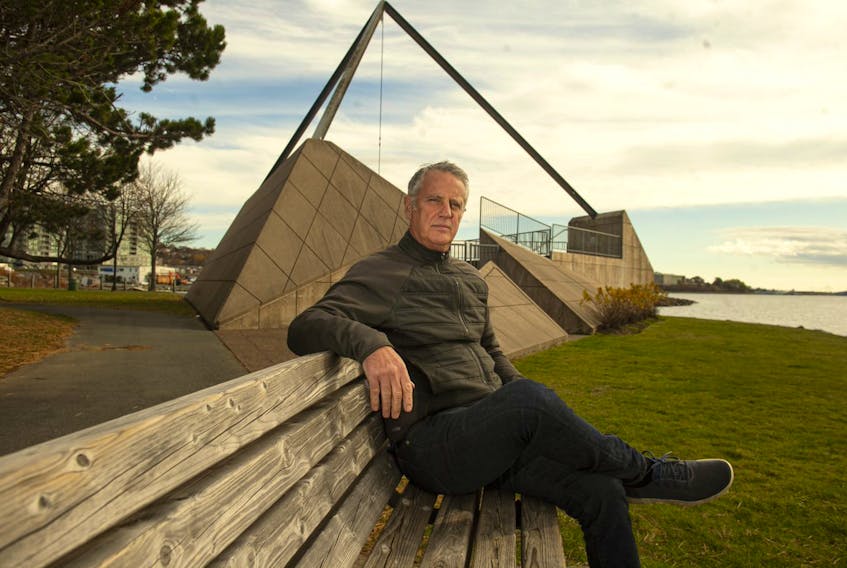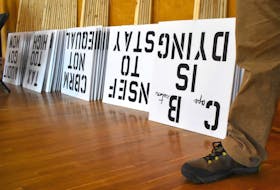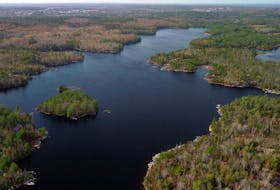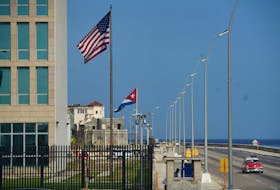When a colleague Monday morning mentioned that this Saturday marks the 30th anniversary of the demolition of the Berlin Wall I didn’t suddenly sit up straight because I am in a perpetual state of high alert during our daily lineup meetings.
But it did make me ponder something I hadn’t thought about in a while.
When I worked for The Financial Post, back when it was a civilized weekly, it regularly dispensed writers to foreign lands to write “special reports.”
I wasn’t at the paper long, so I only got to write one: Germany, when it was divided into East and West.
It was nearly one third of a century ago, just before Ronald Reagan challenged Mikhail Gorbachev to “tear down this wall," which means that my memories are fragmentary: the gun-toting driver from Daimler-Benz who spent a day driving me around Stuttgart; a beer hall in Munich where I was reduced to scribbling notes on beer coasters when I ran out of room in my notebook.
I recall being in the elevator at the Bundestag, their parliament, with a member of the newly ascendant Green Party, who stood there like an imp in shorts and goatee, amidst the frowning dark-suited members of Helmut Kohl’s Christian Democratic Union.
I also know I spent part of a day over in East Berlin, which I recall as Communist-era bleak.
I had some sort of minder on that trip.
When I went back at night, though, I was alone walking up to Checkpoint Charlie, which is where I choose to believe that I passed through the wall from West to East Berlin.
I remember no other civilians. The guards gave my modestly stamped passport a cursory look, then sent me on my way.
Somewhere inside I stopped and turned around because big things had happened there, where the barbed wire-topped wall went from psychedelic on the Western side to monochrome on the East.
Like any reporter on his first foreign assignment, I had read lots of background before the trip. I had also devoured my fair share of le Carré.
So I knew about the East Germans shot trying to cross the concrete and barbed wire. I knew about the prisoner swaps that took place there, and perhaps even about the standoff there back in 1961 when a U.S. diplomat named Allan Lightner tried to cross Checkpoint Charlie to attend the opera in East Berlin.
The last bit was relevant because I was also bound for a musical performance on the eastern side of the wall.
I cannot, for the life of me, recall the musical work, and where it was being mounted, other than that the inside of the building was stunning, like a dream compared to the drabness outside.
The audience was beautiful, everyone bedecked in finery as if they had stepped through a crack in time before Soviet sameness descended on that part of the city.
It was dark when I headed back, the streets slick with rain. Although the last bit might not be remotely true, because I was and am someone prone to an idealized view of reality, someone who would walk slowly through the all-but empty streets of East Berlin, images of le le Carré's George Smiley echoing around in my brain, as I approached the wall.
I would like to be able to say that I walked up to it and touched a hand to the concrete. But fear of a guard with an overactive trigger finger kept me moving.
Back in the West I hailed a cab back and returned to my hotel in a well-that-was-something daze I still feel to this day.
I felt it watching the wall come down along with the rest of the world nearly 30 years ago.
I felt it even yesterday when colleague Ryan Taplin and I took a drive over to the World Peace Pavilion in Dartmouth, one of the three places in Nova Scotia where pieces of the Berlin Wall can be found.
It was locked. From a distance, outside the gate, we couldn’t really tell which was the German concrete. I suppose in a way it didn't really matter. All that mattered was that it had been dismantled, broken up into pieces and scattered far away like a bad memory.
RELATED:
Three decades on, Germans remember surprise fall of Berlin Wall









